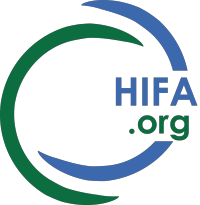Dear HIFA-Zambia and HIFA members,
'Stillbirths receive little investigation and are often unexplained. Communication with women about the death of their baby is limited.' This is the key finding of a multicentre study in Zambia and Tanzania.
CITATION: Understanding the complexities of unexplained stillbirth in sub-Saharan Africa: a mixed-methods study.
BJOG: An International Journal of Obstetrics and Gynaecology.
Bedwell C.; Blaikie K.; Actis Danna V.; Sutton C.; Laisser R.; Tembo Kasengele C.; Wakasiaka S.; Victor S.; Lavender T.
https://obgyn.onlinelibrary.wiley.com/doi/full/10.1111/1471-0528.16629?af=R
ABSTRACT
Objective: To understand the complexities surrounding unexplained stillbirth for the development and implementation of culturally acceptable interventions to underpin care in Tanzania and Zambia.
Design: Mixed-methods study.
Setting: Tertiary, secondary and primary care facilities in Mansa, Zambia, and Mwanza, Tanzania.
Sample: Quantitative: 1997 women giving birth at two tertiary care facilities (one in each country). Qualitative: 48 women and 19 partners from tertiary, secondary and primary care facilities.
Methods: Case review using data from a target of 2000 consecutive case records. Qualitative interviews with a purposive sample of women and partners, using a grounded theory approach.
Results: A total of 261 stillbirths were recorded, with a rate of 16% in Tanzania and 10% in Zambia, which is higher than the previous estimates of 2.24 and 2.09%, respectively, for those countries. Women in both countries who reported a previous stillbirth were more likely to have stillbirth (RR 1.86, 95% CI 1.23–2.81). The cause of death was unexplained in 28% of cases. Qualitative findings indicated that not knowing what caused the baby to be stillborn prevented women from grieving. This was compounded by the poor communication skills of health professionals, who displayed little empathy and skill when counselling bereaved families.
Conclusions: The stillbirth risk in both facilities was far higher than the risk recorded from national data, with women reporting a previous stillbirth being at higher risk. Women want to know the cause of stillbirth and an exploration of appropriate investigations in this setting is required. Providing health professionals with support and continuing training is key to improving the experiences of women and future care.
Tweetable abstract
Stillbirths receive little investigation and are often unexplained. Communication with women about the death of their baby is limited.
--
Join HIFA: www.hifa.org/joinhifa
Join HIFA-Zambia: http://www.hifa.org/join/join-hifa-zambia
Best wishes, Neil
Let's build a future where people are no longer dying for lack of healthcare information - Join HIFA: www.hifa.org
HIFA profile: Neil Pakenham-Walsh is coordinator of the HIFA global health campaign (Healthcare Information For All - www.hifa.org ), a global community with more than 20,000 members in 180 countries, interacting on six global forums in four languages in collaboration with WHO. Twitter: @hifa_org FB: facebook.com/HIFAdotORG neil@hifa.org

